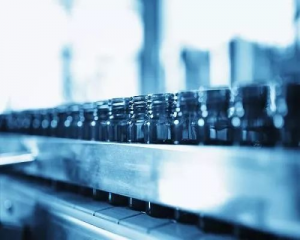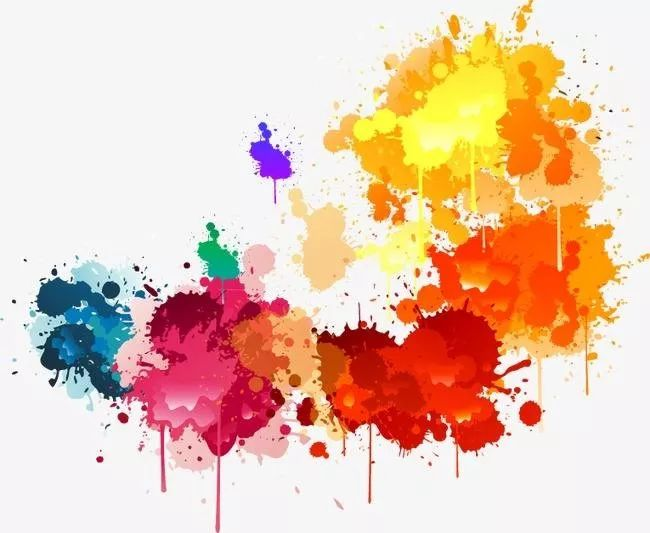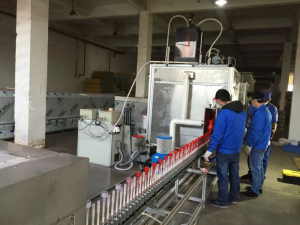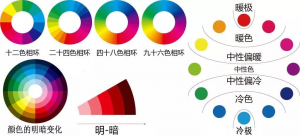Glass bottle coating, in the field of cosmetic packaging materials, this is an important surface treatment link, she adds a layer of beauty to the glass container, in this article, we share an article on glass bottle surface spray treatment & color matching skills in shanghai rainbow package.
一、
Glass bottle paint spraying construction operation skills
1. Use clean diluent or water to adjust the paint to a suitable viscosity for spraying. The suitable viscosity is generally 18 to 30 seconds as measured by a Tu-4 viscometer. If there is no viscometer for a while, the visual method can be used: stir the paint with a stick (iron or wooden stick) and lift it up to a height of 20 cm to stop observation. It is too thick; if the line is broken as soon as it leaves the upper edge of the barrel, it is too thin; when it stops at a height of 20 cm, the paint liquid will form a straight line, and the flow will stop instantly and become dripping. This viscosity is more suitable.
2. The air pressure is best controlled at 0.3-0.4 MPa (3-4 kgf/cm2). If the pressure is too low, the paint liquid will be poorly atomized, and pitting will be formed on the surface; if the pressure is too high, it will easily sag, and the paint mist will be too large, which will not only waste materials, but also affect the health of the operator.
3. The interval between the nozzle and the object surface is generally 200-300 mm. Too close, it is easy to sag; too far, the paint mist is uneven and prone to pitting, and the paint mist is scattered on the way from the nozzle far away from the object surface, causing waste. The specific size of the interval should be appropriately adjusted according to the type of glass bottle paint, viscosity and air pressure. The spraying interval of slow-drying paint can be farther, when the viscosity is thin, it can be farther; when the air pressure is high, the interval can be farther, and the pressure can be small when the pressure is small; If it exceeds this range, it becomes difficult to obtain an ideal paint film.
4. The spray gun can be moved up and down, left and right, preferably at a speed of 10-12 m/min, and the nozzle should be sprayed flat on the surface of the object to minimize oblique spraying. When spraying on both ends of the object surface, the hand that pulls the trigger of the spray gun should be loosened quickly to reduce the paint mist. Because the two ends of the object surface often need to be sprayed more than twice, it is the most likely place to cause sagging.
5. When spraying, the next pass should be pressed against 1/3 or 1/4 of the previous pass, so that there will be no leakage of spray. When spraying quick-drying paint, spray it in sequence at a time. The spray effect is not ideal.
6. When spraying in an outdoor open area, pay attention to the wind direction (do not work when the wind is strong), and the operator should stand in the downwind direction to prevent the paint mist from being blown by the wind to the sprayed paint film and cause a disgraceful granular surface.
7. The order of spraying is: first difficult and then easy, first inside and then outside. First high, then low, first small area and then large area. In this way, the sprayed paint mist will not splash onto the sprayed paint film and damage the sprayed paint film.
二
Glass bottle paint color matching skills
1. The basic principle of fineness
red + yellow = orange
red + blue = purple
yellow + purple = green
2. The basic principle of complementary colors
Red and green complement each other, that is, red can reduce green, and green can reduce red;
Yellow and purple complement each other, that is, yellow can reduce purple, and purple can reduce yellow;
Blue is complementary to orange, that is, blue can reduce orange, and orange can reduce blue;
3. Color basics
Common people say that color is divided into three elements: hue, lightness and saturation. Hue is also called hue, that is, red, orange, yellow, green, cyan, blue, purple, etc.; lightness is also called brightness, which describes the lightness and darkness of a color; saturation is also called chroma, which describes the depth of a color.
4. Basic principles of color matching
Generally do not use more than three kinds of color paint. Different intermediate colors (that is, colors with different tones) can be obtained by mixing red, yellow, and blue colors in a certain proportion. On the basis of the primary color, adding white, you can get colors with different saturation (that is, colors with different shades). On the basis of the primary color, adding black, you can get colors with different lightness (that is, colors with different brightness).
5. Basic color matching skills
The mixing and color matching of paints follows a principle of subtractive color, the three primary colors are red, yellow, and blue, and their complementary colors are green, purple, and orange. The so-called complementary colors are two colors mixed in a certain proportion to obtain white color light, the complementary color of red is green, the complementary color of yellow is purple, and the complementary color of blue is orange. That is, if the color is too red, you can add green; if it is too yellow, you can add purple; if it is too blue, you can add orange. The three primary colors are red, yellow, and blue, and their complementary colors are green, purple, and orange. The so-called complementary colors are two colors mixed in a certain proportion to obtain white color light, the complementary color of red is green, the complementary color of yellow is purple, and the complementary color of blue is orange. That is, if the color is too red, you can add green; if it is too yellow, you can add purple; if it is too blue, you can add orange.
Before color matching, first determine where the color to be blended is in the picture according to the following figure, and then select two similar hues for blending in a certain proportion. Use the same glass bottle plate material or the workpiece to be sprayed for color matching (the thickness of the substrate, the sodium salt glass bottle and the calcium salt glass bottle will show different effects). When color mixing, first add the main color, then use the color with stronger tinting strength as the auxiliary, slowly and intermittently add it and keep stirring, to observe the change of color at any time, and take a sample by wiping, brushing, spraying or sticking it on a clean sample. After the color is stabilized, compare the color with the original sample. In the entire color matching process, the principle of “from shallow to dark” must be grasped.
Shanghai rainbow industrial co.,ltd provides one-stop solution for cosmetic packaging.If you like our products, you can contact us,
Website:
www.rainbow-pkg.com
Email: Bobby@rainbow-pkg.com
WhatsApp: +008615921375189
Post time: May-14-2022



